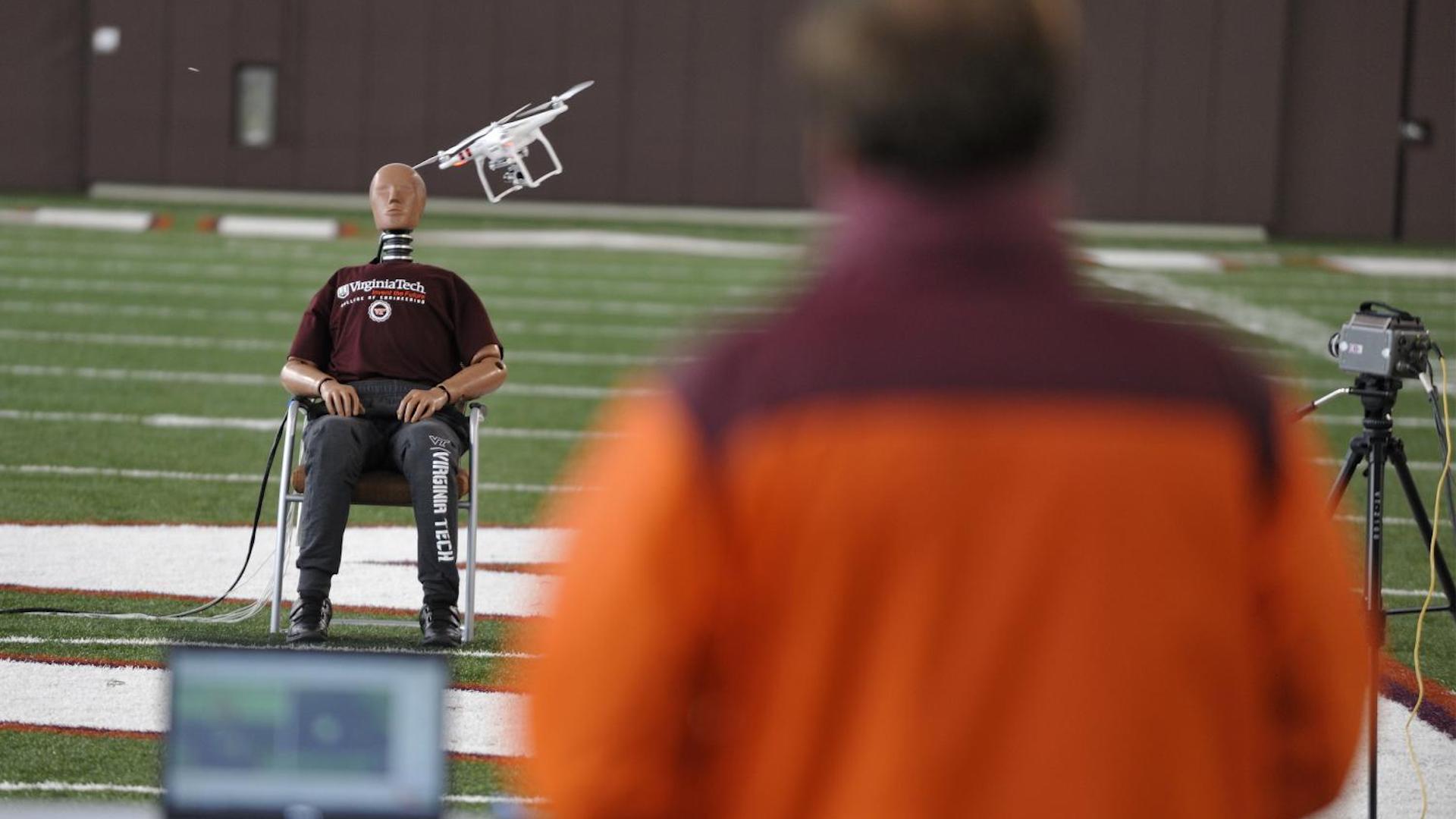

Virginia Tech researchers released the results of a study on how damaging a unmanned aerial vehicle could be if it collided with a person. Ultimately, the conclusions they found suggested a wide range risks, but some of the scenarios encountered are interesting enough on their own.
In an era where drones will be used more and more in a whole landscape of industries and everyday occurrences, studies like these are bound to be proposed more often, as well.
As much as many of us consider drones a standard, secure part of our lives, legally speaking, UAVs can pose extensive public safety risks that need to be answered with experiments, data, and legislation.
Hence, how badly would a UAV like an Amazon delivery drone injure a person if it malfunctioned while hovering overhead? Hypothetically, of course.
According to Phys.Org, regulations from the Federal Aviation Administration currently prohibit drones from flying above people, and rarely grant waivers to do so. These tests, then, are intended to gauge how risky it would actually be to open said regulations up to more liberal piloting. This would, naturally, be a huge boon to the corporate sector intending on using UAVs to engage with their customers directly (see Amazon).
The study was published in Annals of Biomedical Engineering last Thursday, and was led by Virginia Tech assistant professor Steven Rowson and injury biomechanics researchers at test sites approved by the FAA. Their focus was on potential head and neck injuries by three drones currently available to consumers: DJI’s Phantom 3, Inspire 1, and S1000+. They flew these drones into the neck and face of that classic crash-test dummy immortalized in your mind. Here’s what that looked like.

Reportedly, the dummy was fitted with sensors to measure both force and acceleration, and had to endure direct, full-speed collisions in one test, and impacts from above in another. So what were they looking for? Largely, benchmarks varying from life-threatening injuries to injuries considered less severe, like potential skull fractures were tested for. As an example, for a drone impact from above the smallest drone (DJI’s Phantom 3) created a 10 percent median risk of severe neck injury, while the biggest drone (DJI’s S1000+) resulted in a 70 percent median risk.

That’s a large gap, data which is likely interesting to policymakers and researchers themselves. In other words, it’ll probably be easier to legislate the lighter drones for overhead operation than it is the heavier ones. That may seem like common sense, but the idea is to create actual research and get it on the books, so to speak. It’s experiments like these that can become part of the foundation for tangible, legislative change in the future, whether we agree with it or not.
Rowson agrees that the spectrum in results here is vast, admitting, “There’s a wide range of risk. In some instances it was low, and in some instances it was high, and there are lessons we can take away from that to reduce injury risk in a deliberate way through product design.”
Feel free to look over the study yourself, for an extensive look at the gathered data.
According to the paper’s primary author, Eamon Campolettano, “The overarching goal for manufacturers should be to limit energy transfer,” though there is surely a variety of opinions on what is the most effective way to tackle the risks. In any case, the fact that sophisticated experiments are taking place at prestigious technical institutes like Virginia Tech is one to celebrate. We’ll simply get more data, ask more questions, and have more tools to most securely allow drones into our lives.